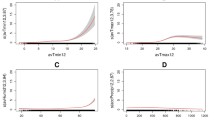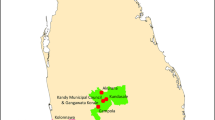Abstract
Dengue and its more serious form, Dengue Haemorrhagic Fever, is an acute vector-borne disease, endemic in more than 100 countries in the tropics and sub-tropics. It is increasing as a public health problem with approximately two billion people at risk. The disease is transmitted by the mosquito Aedes aegypti which is highly domesticated. During the 1980s the mosquito recolonised areas in the Americas from where it had previously been eradicated and the incidence of dengue increased dramatically, affecting places where the disease had hitherto been unknown. It was identified as a global priority by the World Health Organisation in 1993.
Venezuela experienced major dengue epidemics in 1989 and 1995 and further outbreaks throughout the 1990s. In this paper the macro-economic issues as well as human behavioural characteristics in the occurrence of epidemic dengue are discussed in the Venezuelan context using the results of a survey in Caracas, and their significance is compared with climatic factors.
Given that the vector's eradication is improbable in the near future and that no cure or vaccines are yet available, prevention is the only strategy for disease control. Vector control programmes are the current priority, but have had little success. It is argued that there is a need for individual and community participation in programmes but this will require more information as to the knowledge, attitudes and practices of the populations at risk, which suggests a role for social scientists.
Similar content being viewed by others
References
Aiken, S.R.; Leigh C.H.: Dengue Haemorrhagic Fever in South-East Asia. Trans I.B.G. Vol. 3, 476–497 (1978).
Araoz F.: Dengue en Venezucla, Boletin de Salud Publica, 17–23, 60 Dic (1990).
Barrera R.; Navarro J.C.; Mora J.D; Dominguez D.; Gonzalez D.: Public service deficiencies and Aedes aegypti breeding sites in Venezuela, Bull Pan Am Health Org 29(3), 193–205 (1995).
Gubler D.J.: Dengue in Monath, Vol. II, pp 223–260 (1988).
Gubler D.J.; Clark G.G.: Dengue/Dengue Hemorrhagic Fever: The Emergence of a Global Health Problem, Emerging Infections Diseases 1(2): 55–57, (1995).
Halstead S.B.: Dengue in the Health Transition, Kaohsiung Journ Med Sci 10.S2–S14 (1994).
Knudsen A.B.: Global Distribution and Continuing Spread of Aedes Albopictus, Parassitologia 37(2–3), 91–97 (1995).
Monath T.P. (ed): The Arboviruses, CRC Press, Florida 1988.
Omran A.R.: The Epidemiologic Transition: A Theory of the Epidemiology of Population Change. Milbank Memorial Quarterly 49(4) 1, 509–538 (1971).
Pan American Health Organisation: New, Emerging, and Reemerging Infectious Diseases, Bulletin of PAHO 30(2), 176–181 (1996).
Romi R.: History and updating on the spread of A. albopictus in Italy, Parassitologia, 37(2–3), 93–103 (1995).
World Bank: World Development Report 1992, OUP for World Bank 1992.
WHO: Weekly Epidemiological Record No. 1, 5 Jan 1990a.
WHO: Weekly Epidemiological Record No. 6, 9 Feb 1990b.
WHO: Weekly Epidemiological Record No. 43, 22 Oct 1993.
WHO: Preventing Dengue and Dengue Hacmorrhagic Fever, CTD/FIL/(DEN)/94.4 1994.
WHO: Weekly Epidemiological Record No. 47, 24 Nov 1995.
WHO: Weekly Epidemiological Record No. 34, 23 Aug 1996.
WHO: Weekly Epidemiological Record No. 17, 25 April 1997.
Author information
Authors and Affiliations
Rights and permissions
About this article
Cite this article
Brightmer, M., Fantato, M. Human and environmental factors in the increasing incidence of dengue fever: a case study from Venezuela. GeoJournal 44, 103–109 (1998). https://doi.org/10.1023/A:1006801617347
Issue Date:
DOI: https://doi.org/10.1023/A:1006801617347




